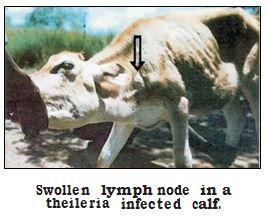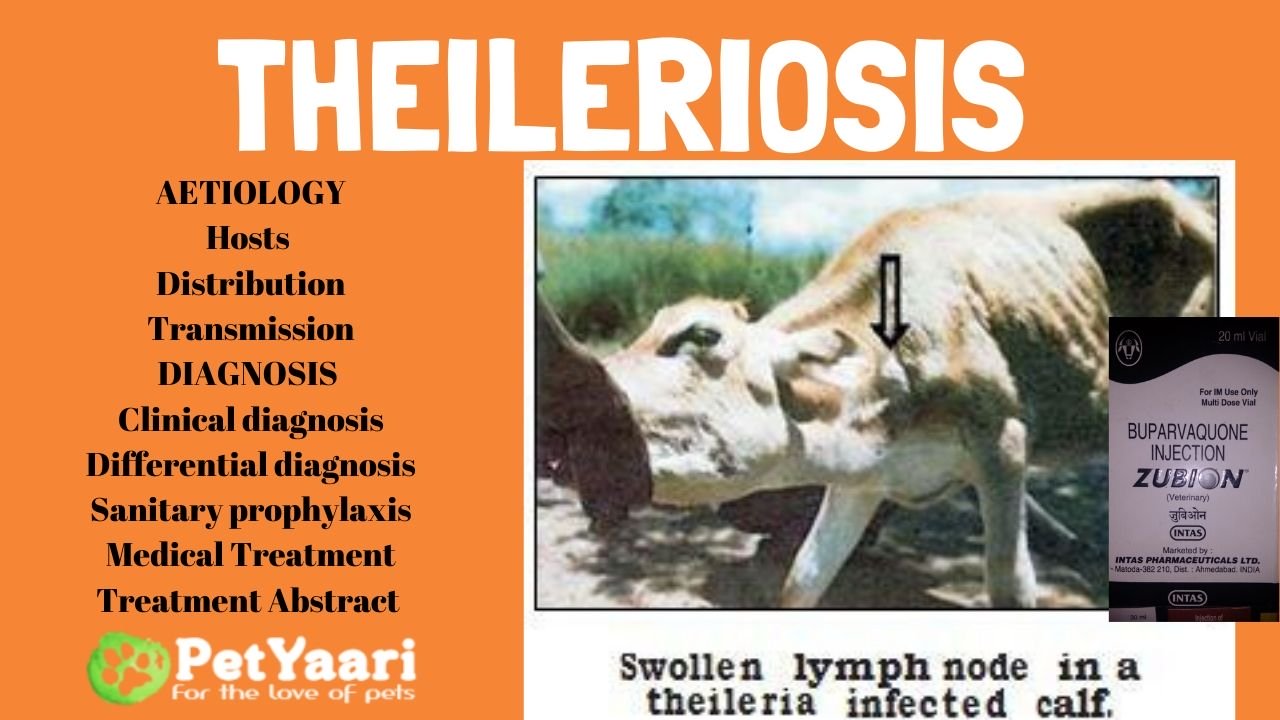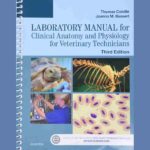AETIOLOGY OF THEILERIOSIS
Genus: Theileria, Family: Theileriidae, Order: Piroplasmida, Subclass: Piroplasmia, Phylum: Apicomplexa.

- Theileriae are obligate intracellular protozoan parasites that infect both wild and domestic Bovidae throughout much of the world.
- Some species also infect small ruminants.
- They are transmitted by ixodid ticks, and have complex life cycles in both vertebrate and invertebrate hosts
Hosts of THEILERIOSIS
- T. parva infects cattle, African buffalo (Syncerus caffer), Indian water buffalo (Bubalus bubalis), and waterbuck (Kobus spp.).
- Taurine breeds of cattle are generally more susceptible to ECF than zebu (Bos indicus) or sanga breeds.
- In addition, introduced cattle, whether of a taurine, zebu, or sanga breed, are much more susceptible to theileriosis than cattle from endemic areas.
- Subclinical infections are common only in cattle and water buffalo; African buffalo and waterbuck are reservoirs for the infection

Distribution

Transmission Of THEILERIOSIS

- Both T. parva and T. annulata are spread by ticks.
- The most important vector for T. parva is Rhipicephalus appendiculatus. R. zambeziensis in southern Africa and R. duttoni in Angola can also spread East Coast fever.
- T annulata is transmitted by ticks of the genus Hyalomma
- Ticks can remain infected on the pasture for up to 2 years depending on the climatic conditions.
- Disease is not maintained in the absence of these field vectors.
- Theileria sporozoites are transmitted to susceptible animals in the saliva of the feeding tick .

DIAGNOSIS Of THEILERIOSIS
- Theileriosis should be suspected in tick–infested animals with a fever and enlarged lymph nodes.
- In endemic areas, the mortality rate may be high only in calves In the field, diagnosis is usually achieved by finding Theileria parasites in Giemsa-stained blood smears and lymph node needle biopsy smears
Clinical diagnosis of THEILERIOSIS
- The first clinical sign of ECF is usually a swelling of the draining lymph node, usually the parotid, for the ear is the preferred feeding site of the vector; this is followed by a generalised lymphadenopathy in which superficial lymph nodes such as the parotid, prescapular, and prefemoral lymph nodes, can easily be seen and palpated.
- Fever ensues and continues throughout the course of infection; this rise in temperature is rapid and may reach 106°F (42°C).
- There is marked petechial and ecchymotic haemorrhage on most mucous membranes of the conjunctiva and the buccal cavity.
- Anorexia develops, and loss of condition follows.
- Before death the animal is usually recumbent, the temperature falls, and there is a severe dyspnoea due to pulmonary oedema that is frequently seen as a frothy nasal discharge.
- Mortality in fully susceptible cattle can be nearly 100%.
- A fatal condition called ‘turning sickness’ is associated with the blocking of brain capillaries by infected cells and results in neurological signs.
- In the acute disease of tropical theileriosis, death occurs 15–25 days after infection.
- Clinical signs might include pale mucous membranes (anaemia) or jaundice, as the piroplasms will precipitate destruction of red blood cells. During the stage when there is great production of macroschizonts within macrophages, there could be enlarged lymph nodes, and a generalised loss of condition and muscle wasting due to massive release of cytokines from infected cells.
- Haemorrhagic diarrhoea may be present in the terminal stages

Differential diagnosis of THEILERIOSIS
- Heartwater
- Trypanosomosis
- Babesiosis
- Anaplasmosis
Sanitary prophylaxis for THEILERIOSIS
Bovine theileriosis is generally controlled by the use of acaricides to kill ticks, but this method is not sustainable
Medical Treatment Of Theileriosis
- Chemotherapeutic agents such as buparvaquone are available to treat T. parva and T. annulata infections.
- Treatments with these agents do not completely eradicate theilerial infections and lead to the development of carrier states in their hosts.
- Recovery from one strain of T. annulata confers cross-protection against most other strains.

Treatment Abstract Of Theileriosis
One hundred and nine cases of bovine tropical theileriosis (Theileria annulata infection, were treated with oxytetracycline (23 cases) or buparvaquone (86 cases). Ages of affected cattle ranged from 6 days to 3 years. Oxytetracycline cured only 7 animals (30.4%), all of them calves below 15 days old, while buparvaquone cured all but one (98.8%), a severely affected 10 day old calf. Cured cattle remained theileriosis-free for 12 to 18 months following recovery.


![10 Question Banks Needed For ICAR AIEEA [Pdfs]](https://vetstudyhub.com/wp-content/uploads/2020/06/10-Question-Banks-Needed-For-ICAR-AIEEA-Pdfs-150x150.png)












Very good information
Thank you sir for such application
Thank you sir for your valuable feedback, we will be adding more content as days go on, Hope We Serve ALL Veterinarians a bit from our end.